Is Playdough a Fidget Toy?
Playdough is considered one of the most versatile play toys on the market today. Reason being, it’s a fun fidget toy that also promotes an active imagination and fine motor skill development. When played with correctly, it’s not messy and is ideal for kids and even adults! So, is playdough a fidget toy?
Let’s talk about this and more on why you should purchase some of this squishy putty for your kiddos!
What is a Fidget Toy?
Fidget toys are tactile toys that allow kids (and adults) to play with it in a variety of ways. The purpose of fidget toys is to help kids who have excess energy to get that energy out in a safe and productive way. They’re also great for relieving tension or stress that a child may be experiencing. Fidget toys comes in a variety of forms, but they should have at least one of the following traits:
- Multiple parts
- Moving parts (spinning, pulling, popping, etc.)
- An ability to be changed and shaped
- Multiple textures
- Palm size or smaller
Is Playdough a Fidget Toy?
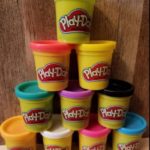 Playdough has been around since 1955 and has been the favorite fidget toy of families for decades. Although the formula has changed over the years, the purpose has only expanded!
Playdough has been around since 1955 and has been the favorite fidget toy of families for decades. Although the formula has changed over the years, the purpose has only expanded!
Today, Playdough is considered a fidget toy amongst experts! This is because playdough is one of the most tactile toys on the market. It has the ability to be squished, pulled, shaped, molded, and more. Additionally, the company itself offers a wide variety of play set options such as kitchen sets, ice-cream molds, shape molds, etc. The ability to use their hands to mold, squish, push, pull, shape, spin, clasp, and more provides kids with a variety of fidgeting release options!
Who Would Benefit from Using Playdough as a Fidget Toy?
Every child can benefit from playing with Playdough products. The ability to use their hands to create something aids in fidget reduction and even stress and anxiety relief. Playdough is ideal for any child, but in particular, kids with any of the following traits:
- ADHD/ADD
- Excess energy
- Kids who are known to fidget with their hands (tapping, hitting, snapping, etc.)
- Children with anxiety
- Kids who like to play with their hands
- Children who are unsure of how to express their emotions
Playdough is not just for kids who need to fidget with something, but it’s a great option for them! Playdough offers a wide variety of benefits not only for fidgeters, but for all kids and parents looking to enhance various developmental skillsets.
What Developmental Benefits Does Playdough Offer?
Playdough is not only a phenomenal fidget toy, but it’s also ideal for child development. In particular, this squishy dough is ideal for enhancing fine motor skills in kids. In simple terms, fine motor skills are the skills needed to use your finger and sometimes hands in a detailed manner. The most common fine motor skills you’ve probably heard of include:
- Writing
- Using scissor
- Coloring inside the lines
- Pincer grasps (using pincher finger and thumb)
There are various others, but these are the most common. If you notice your child is struggling in this area, don’t worry. There are various ways to enhance these skills and using Playdough is one of them! On top of being used as a fidget toy, your kids will be reaping the rewards of fine motor development as they manipulate the dough!
What Age is Playdough Best For?
Playdough is best for kids ages two and up! Introducing it sooner could be dangerous as playdough is not edible and kids younger than two are known for putting things into their mouth.
Even at two years old though, you should be monitoring your child to ensure they aren’t trying to eat it. Two years old is also when fine motor skills start to develop as well as energy levels start rising. Since playdough is an excellent fidget toy, implementing it at a young age can help control fidgeting from the start.
You can introduce playdough at really any age though. If your child is in kindergarten and just showing signs of fidgeting, you can always bring Playdough into the home and see if it helps!
What can Kids Make Out of Playdough for Fidget Toys?
 What’s especially unique about Playdough is that it’s not only good as a stand-alone fidget toy. Of course, your kiddo can play with Playdough as it is and get the benefits of reduced fidgeting. However, Playdough is also a versatile substance that can be manipulated into various kinds of more-permanent fidget toys!
What’s especially unique about Playdough is that it’s not only good as a stand-alone fidget toy. Of course, your kiddo can play with Playdough as it is and get the benefits of reduced fidgeting. However, Playdough is also a versatile substance that can be manipulated into various kinds of more-permanent fidget toys!
For example, Playdough can be turned into a hard substance when you bake it low and slow in an oven (200 degrees). You can make fidget spinners using Playdough that are rock solid and can be used as a permanent fidget toy for your kiddo!
Additionally, making stress balls using Playdough is a great fidget toy option! All you need is Playdough and a balloon. You simply fill the balloon with some playdough until it’s the desired size, tie it off, and you’re done! It’s a squishy and safe option for fidgeting kiddos! The best part? If it breaks, it doesn’t make a mess because Playdough is a solid substance.
Does Playdough Help Relieve Stress?
Playdough can help relieve stress and enhance focus in kids. It can also help you as the parent learn when your child is feeling stressed or anxious. Playdough helps relieve stress by providing a healthy way to release some of their energy. Additionally, it gives them something else to focus on. It’s especially helpful if you can play with your kiddo, such as playing restaurant and give them specific foods to make at a time. It forces focus and can help relieve stress.
Final Thoughts on Playdough Being a Fidget Toy
Playdough is in fact one of the most beneficial fidget toys you’ll come across! It’s ideal for kids of at least 2 years of age. Playdough provides kids with the ability to reduce stress, get out their excess energy, and even enhance fine motor skills and imagination! It’s an all-in-one fidget toy that can be used alone or turned into other objects like stress balls and fidget spinners!
If you have a fidgeter, give Playdough a try!
Is Playdough a Fidget Toy? Read More »

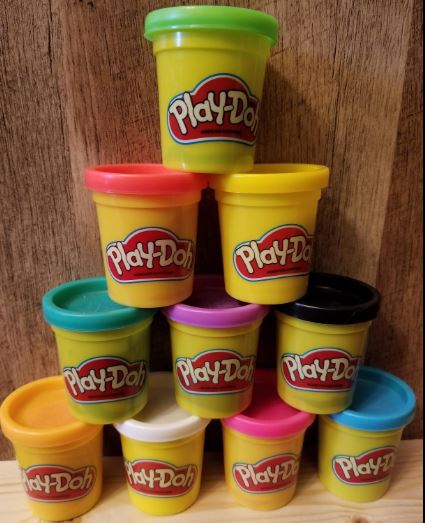
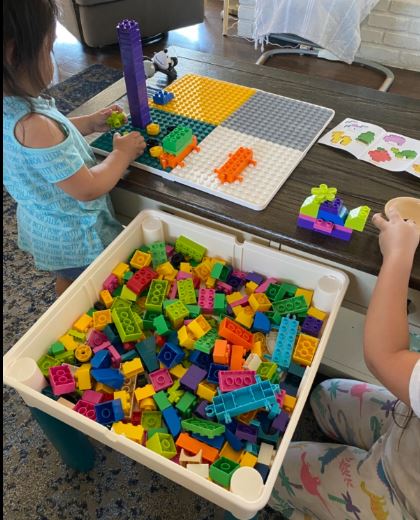
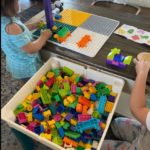 Why are Building Blocks a Good Toy for Preschoolers?
Why are Building Blocks a Good Toy for Preschoolers?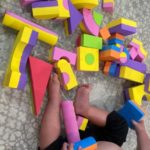 The most important pieces are the blocks, all different shapes, sizes, colors and textures. For example, Legos and Duplos, foam blocks, magnet blocks, etc. You will also need some cubbies or boxes to place the blocks in when they are not in use. Make sure each kind of block has its own storage area so nothing gets mixed up! It can also be beneficial to have a carpet area for designating where preschoolers can build. This keeps things organized and the blocks in one specific area.
The most important pieces are the blocks, all different shapes, sizes, colors and textures. For example, Legos and Duplos, foam blocks, magnet blocks, etc. You will also need some cubbies or boxes to place the blocks in when they are not in use. Make sure each kind of block has its own storage area so nothing gets mixed up! It can also be beneficial to have a carpet area for designating where preschoolers can build. This keeps things organized and the blocks in one specific area.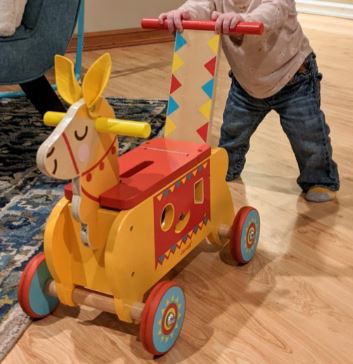
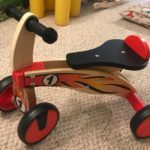 Wooden ride on toys for 1 year olds are toys that your child can sit on and play with. They are wooden (hence the name) and are typically moveable in some way. For example, they may be on wheels, or they may be able to rock back and forth. Sometimes they can even bounce up and down in place if they have the spring mechanics to do so!
Wooden ride on toys for 1 year olds are toys that your child can sit on and play with. They are wooden (hence the name) and are typically moveable in some way. For example, they may be on wheels, or they may be able to rock back and forth. Sometimes they can even bounce up and down in place if they have the spring mechanics to do so!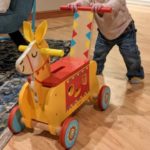 Their purpose is to enhance several development facets. For example, their fine motor skills are enhanced by having to hold onto handles. Their
Their purpose is to enhance several development facets. For example, their fine motor skills are enhanced by having to hold onto handles. Their 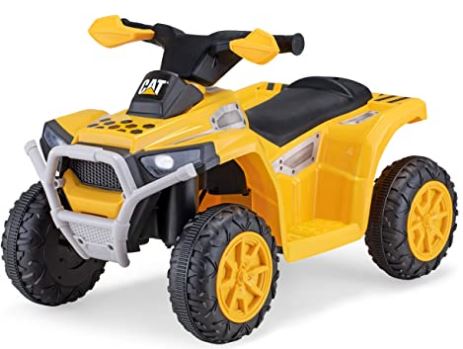
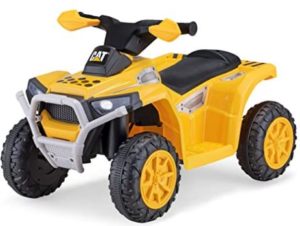 Six-volt ride-on toys refers to any toy that toddlers can ride on that requires a 6-volt battery to work. These toys often mimic real-life objects like cars or trucks. Their purpose is to allow your toddler to enhance various skills through the use of a ride on play toy!
Six-volt ride-on toys refers to any toy that toddlers can ride on that requires a 6-volt battery to work. These toys often mimic real-life objects like cars or trucks. Their purpose is to allow your toddler to enhance various skills through the use of a ride on play toy!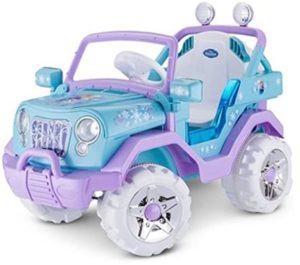 There are numerous toy companies on the market who make 6-volt ride on toys for toddlers. Most of them make very similar kinds of ride on toys as well! The most popular kinds of 6-volt ride on toys include:
There are numerous toy companies on the market who make 6-volt ride on toys for toddlers. Most of them make very similar kinds of ride on toys as well! The most popular kinds of 6-volt ride on toys include: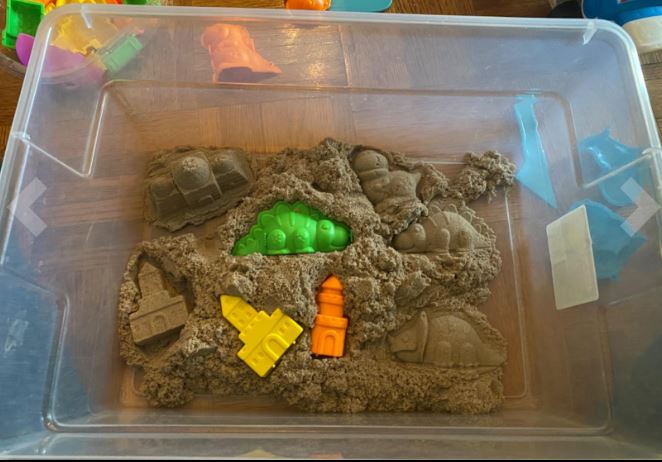
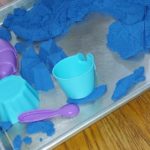 Depending on the way the kinetic sand was used and what it was made from, it is often easy to clean up! Kinetic sand is made from materials that are not sticky, so the sand usually falls right off any area it touches. It only sticks to itself.
Depending on the way the kinetic sand was used and what it was made from, it is often easy to clean up! Kinetic sand is made from materials that are not sticky, so the sand usually falls right off any area it touches. It only sticks to itself.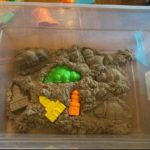 Place the kinetic sand in a clear container: having your kiddo play with the sand in a large clear container is a great way to keep kinetic sand mess free. It’s also a fantastic way to teach your kiddo
Place the kinetic sand in a clear container: having your kiddo play with the sand in a large clear container is a great way to keep kinetic sand mess free. It’s also a fantastic way to teach your kiddo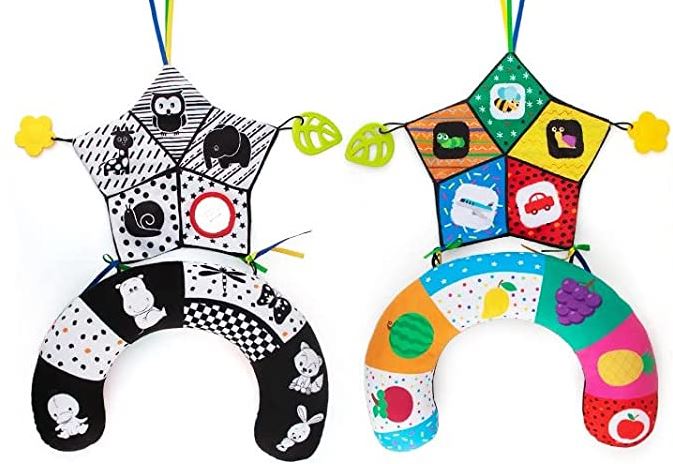
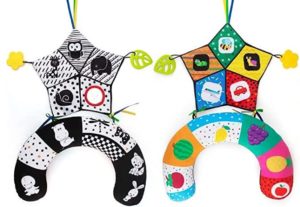 Your little baby is all about the playtime when they enter their fourth month. They may already be rolling, or they may start soon. They are noticing colors more, especially red and green. You may notice they are reaching for things and even beginning to pass toys from one hand to another. You’ll see your baby becoming more and more interested in interactive play in their fourth month. You may even start getting some good belly laughs from them. We have rounded up a list of 9 great Montessori toys for 4 month old to help their development and keep them engaged.
Your little baby is all about the playtime when they enter their fourth month. They may already be rolling, or they may start soon. They are noticing colors more, especially red and green. You may notice they are reaching for things and even beginning to pass toys from one hand to another. You’ll see your baby becoming more and more interested in interactive play in their fourth month. You may even start getting some good belly laughs from them. We have rounded up a list of 9 great Montessori toys for 4 month old to help their development and keep them engaged.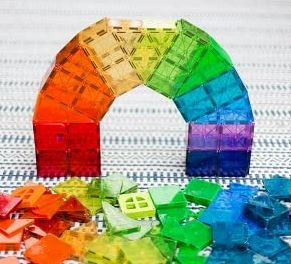
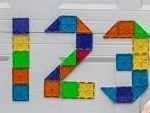 Magna Tiles have been around since 1997 and are a favorite in many households. They are a great introduction to STEM (science, technology, engineering, and math) learning. The recommended age starts at three, and that is the perfect age to begin incorporating
Magna Tiles have been around since 1997 and are a favorite in many households. They are a great introduction to STEM (science, technology, engineering, and math) learning. The recommended age starts at three, and that is the perfect age to begin incorporating 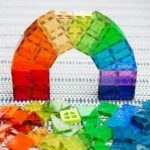 It would be a good idea to splurge and get one of the bigger sets of Magna tiles. That will give your child lots of freedom when it comes to building. You can buy 100-piece sets. You can also buy cars and bases to use with your Magna tiles, these aren’t necessary, but they will add to the fun of your Magna tile set. If you have a couple of kids, you may need to buy more so they can make their own creations, and you don’t have fights break out over there not being enough tiles.
It would be a good idea to splurge and get one of the bigger sets of Magna tiles. That will give your child lots of freedom when it comes to building. You can buy 100-piece sets. You can also buy cars and bases to use with your Magna tiles, these aren’t necessary, but they will add to the fun of your Magna tile set. If you have a couple of kids, you may need to buy more so they can make their own creations, and you don’t have fights break out over there not being enough tiles.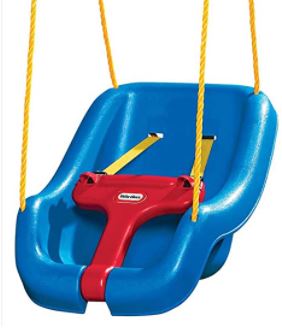
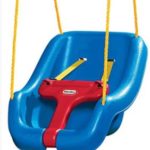 This swing is perfect for babies nine months and up. The swing can hold up to 50 pounds and has an adjustable t-bar and straps to keep your baby and toddler safe. This is a bucket seat, easy to assemble, and made from sturdy plastic.
This swing is perfect for babies nine months and up. The swing can hold up to 50 pounds and has an adjustable t-bar and straps to keep your baby and toddler safe. This is a bucket seat, easy to assemble, and made from sturdy plastic.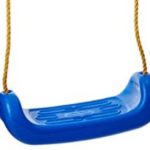 A perfect swing for your 3- to 5-year-old. This swing can hold up to 100 pounds, and it is made from high-quality plastic and has been made to last.
A perfect swing for your 3- to 5-year-old. This swing can hold up to 100 pounds, and it is made from high-quality plastic and has been made to last.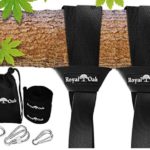 You will need a swing hanging kit to go with whichever swing you decide to purchase. This kit is easy to install, will hold up to 2200 LBs, and is made from high-quality material. Although Little Tikes does not make a hanging kit this is what we consider the best Little Tikes swing hanging kit.
You will need a swing hanging kit to go with whichever swing you decide to purchase. This kit is easy to install, will hold up to 2200 LBs, and is made from high-quality material. Although Little Tikes does not make a hanging kit this is what we consider the best Little Tikes swing hanging kit.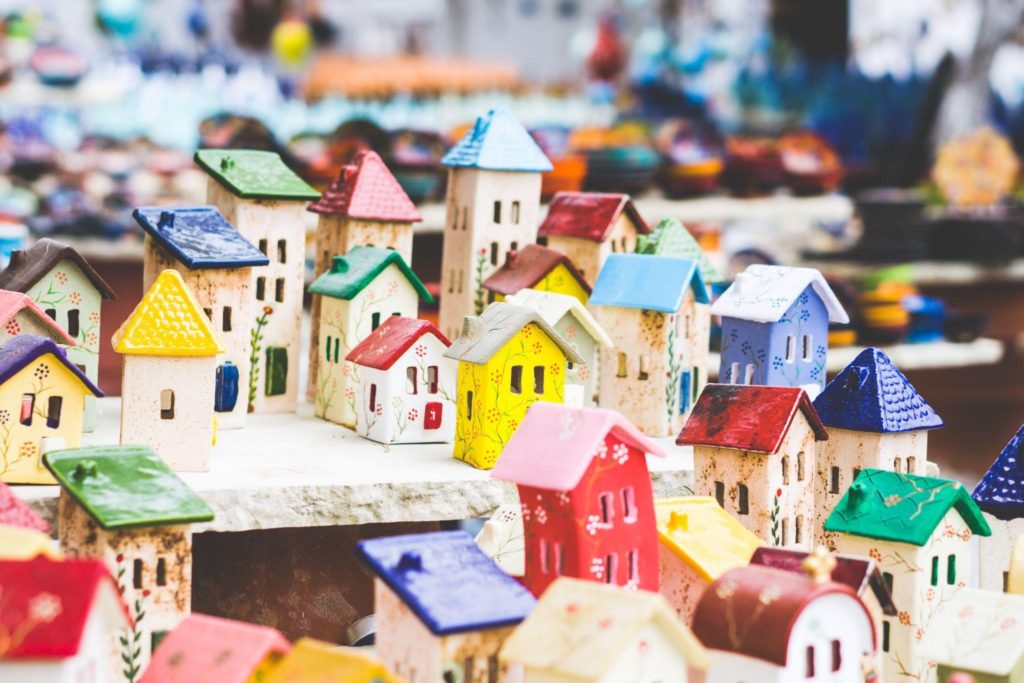

 Dry your work on a very clean and flat surface, designed for this kind of clay in order to avoid the warp. Keep your clay at normal temperature and away from hot lights, as heat can damage your work. You’ll also want to avoid using water if you can as water leads to cracking as it evaporates while the product is drying.
Dry your work on a very clean and flat surface, designed for this kind of clay in order to avoid the warp. Keep your clay at normal temperature and away from hot lights, as heat can damage your work. You’ll also want to avoid using water if you can as water leads to cracking as it evaporates while the product is drying.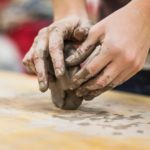
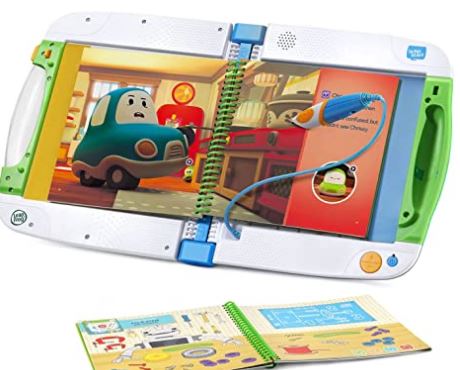
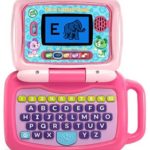 The LeapFrog 2-in-1 Leaptop Touch is a device designed to mimic the look of a laptop that mom, dad, or guardian would have. The Leaptop Touch comes with a full A-Z keyboard and 1-10 keyboard to help your child learn their alphabet and numbers. It also has a swivel screen that can be completely turned and used as a tablet.
The LeapFrog 2-in-1 Leaptop Touch is a device designed to mimic the look of a laptop that mom, dad, or guardian would have. The Leaptop Touch comes with a full A-Z keyboard and 1-10 keyboard to help your child learn their alphabet and numbers. It also has a swivel screen that can be completely turned and used as a tablet.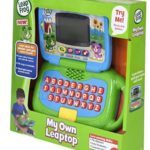 This toy is ideal for parents who want to encourage learning, but don’t want their child heavily fixated on the screen. The LeapFrog My Own Leaptop looks like a laptop, but for kids! It comes with a full alphabet keyboard and a screen that flips up. It is not a touch screen unlike the Leaptop Touch, and it also does not have the numbers. However, it is a great starter device your young kids who want to look like mom/dad/guardian!
This toy is ideal for parents who want to encourage learning, but don’t want their child heavily fixated on the screen. The LeapFrog My Own Leaptop looks like a laptop, but for kids! It comes with a full alphabet keyboard and a screen that flips up. It is not a touch screen unlike the Leaptop Touch, and it also does not have the numbers. However, it is a great starter device your young kids who want to look like mom/dad/guardian!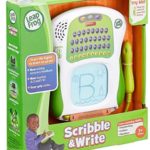 Ideal LeapFrog toys for 4 year olds who are about to enter preschool or have already started it. The LeapFrog Scribble and Write is, as it sounds, a place for your kids to practice writing and drawing! The device is similar to that of an etch-o-sketch. Your child can use the provided pen to write on the screen and then slide the tab on the bottom to erase what they have made. It’s a fantastic way to promote fine motor skills and an active imagination as your child can draw flowers, you, the sun, a home, whatever they want!
Ideal LeapFrog toys for 4 year olds who are about to enter preschool or have already started it. The LeapFrog Scribble and Write is, as it sounds, a place for your kids to practice writing and drawing! The device is similar to that of an etch-o-sketch. Your child can use the provided pen to write on the screen and then slide the tab on the bottom to erase what they have made. It’s a fantastic way to promote fine motor skills and an active imagination as your child can draw flowers, you, the sun, a home, whatever they want!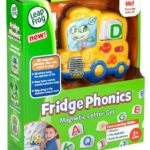 This toy is particularly unique as it promotes fine motor skills, early learning, and an imagination all in one! The toy is entirely magnetic and sticks to your fridge door. It comes with all the letters in the alphabet as well as a magnetic piece that looks like a school bus. Your child can choose a letter, stick it to the bus, and the bus will tell you what letter it is out loud so your child can learn to identify their letters.
This toy is particularly unique as it promotes fine motor skills, early learning, and an imagination all in one! The toy is entirely magnetic and sticks to your fridge door. It comes with all the letters in the alphabet as well as a magnetic piece that looks like a school bus. Your child can choose a letter, stick it to the bus, and the bus will tell you what letter it is out loud so your child can learn to identify their letters.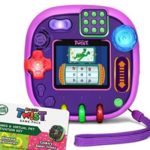 Ideal for kids who do not get overstimulated easily and prefer games where they don’t know they’re learning anything; this toy has all the makings for them! The LeapFrog RockIt Twist Handheld system is designed to promote fine motor skills, age-appropriate learning, imagination, and even responsibility!
Ideal for kids who do not get overstimulated easily and prefer games where they don’t know they’re learning anything; this toy has all the makings for them! The LeapFrog RockIt Twist Handheld system is designed to promote fine motor skills, age-appropriate learning, imagination, and even responsibility!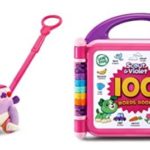 The LeapFrog Scout and Violet 100 Words Book promotes early vocabulary in young learners. The device holds over 100 words that are common in a 4-year-old vocabulary. Your child will touch the pictures/words on the screen and the device will play them back to your child out loud. This helps your child with vocab as well as memory. The book will also provide fun facts about each of the words and what they mean in relation to your child’s life!
The LeapFrog Scout and Violet 100 Words Book promotes early vocabulary in young learners. The device holds over 100 words that are common in a 4-year-old vocabulary. Your child will touch the pictures/words on the screen and the device will play them back to your child out loud. This helps your child with vocab as well as memory. The book will also provide fun facts about each of the words and what they mean in relation to your child’s life!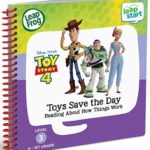 For the fans of Woody, Buzz, and Bo Peep, this LeapFrog toy will get your child’s imagination running and teach them all about reading, science, and vocabulary! The toy needs to be paired with a LeapFrog device that has a screen so your child can play along with the games.
For the fans of Woody, Buzz, and Bo Peep, this LeapFrog toy will get your child’s imagination running and teach them all about reading, science, and vocabulary! The toy needs to be paired with a LeapFrog device that has a screen so your child can play along with the games.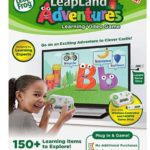 This toy is intended to be your child’s first video game, but a video game that is educational and productive! The game hooks up to your television and comes with a controller that your kids use to interact with the toy. The toy takes your child on an adventure to find hidden keys that unlock the doors to a castle. Along their trek, they learn about letters, numbers, and vocabulary!
This toy is intended to be your child’s first video game, but a video game that is educational and productive! The game hooks up to your television and comes with a controller that your kids use to interact with the toy. The toy takes your child on an adventure to find hidden keys that unlock the doors to a castle. Along their trek, they learn about letters, numbers, and vocabulary!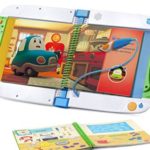 Since your child is currently in or about to be in preschool, you may want to consider purchasing the LeapFrog LeapStart Preschool Success Bundle! The toy comes with a LeapStart stylus that you child will use to interact with the toy. They’ll enhance their fine motor skills by using the stylus to touch the screen when prompted such as when identifying letters or drawing numbers. Another great addition to our LeapFrog toys for 4 year olds.
Since your child is currently in or about to be in preschool, you may want to consider purchasing the LeapFrog LeapStart Preschool Success Bundle! The toy comes with a LeapStart stylus that you child will use to interact with the toy. They’ll enhance their fine motor skills by using the stylus to touch the screen when prompted such as when identifying letters or drawing numbers. Another great addition to our LeapFrog toys for 4 year olds.